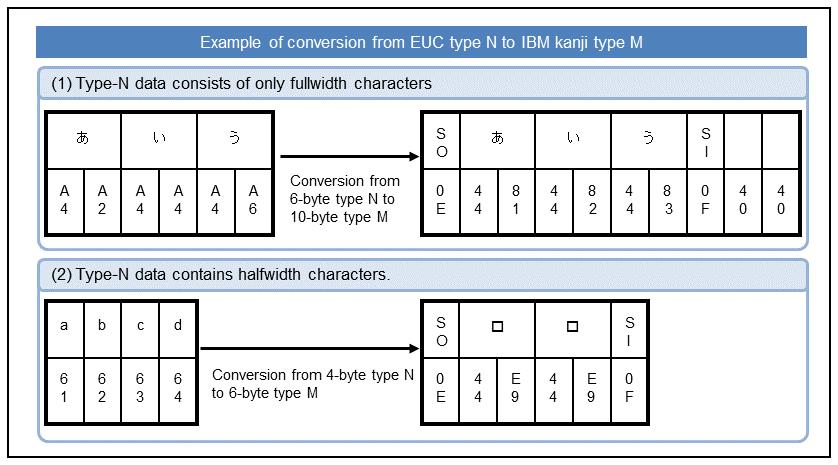Notes on conversion from type N to type M (1)

Figure 9.16 Conversion from type N to type M (1)
- Case (1):
-
The fullwidth characters in the input data are converted to the codes of the encoding of the output data. Also, as in the example, if the output area is larger than the actual output data size, the data is padded with halfwidth spaces.
- Case (2):
-
In the conversion from type N to type M, all of the codes of the input data are regarded as 2-byte codes for conversion. In this example, the 1-byte codes "0x61", "0x62", "0x63", and "0x64" of the input data are regarded as the two 2-byte codes "0x6162" and "0x6364", and the codes are therefore converted to external characters for output.
-
In this example, Shift code in the output settings is set to Add. Also, in the setting for converting to the default code if an external character is not registered, the default external kanji code of IBM kanji is set to "0x44E9".
-
If ASCII character present in kanji data is set in Stop conditions in the options setting screen of the Data Processing Settings screen, the operation stops and the data is not converted.